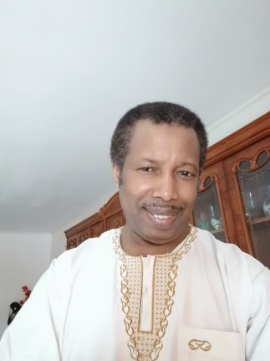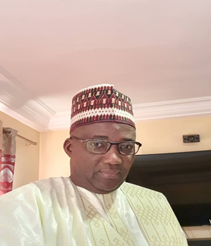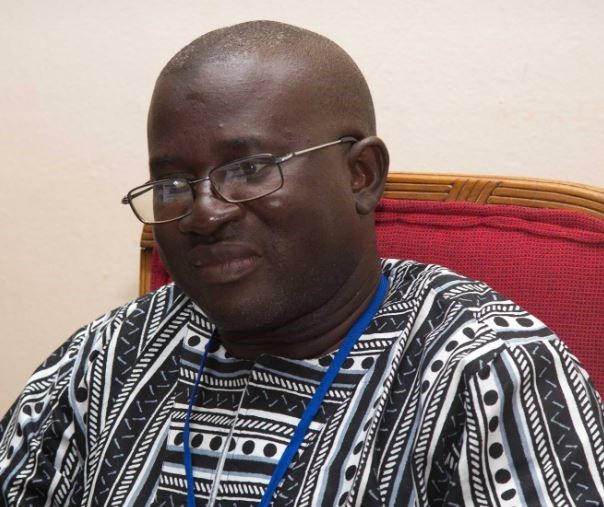Momodou S Sidibeh- Stockholm/Kartong
One would have thought that the existential threat posed by rising sea levels we are facing on a global scale would have been a sufficient deterrent to anyone contemplating industrial mining of sand from the dunes between Kartong and the Atlantic Ocean. Should that fail to scare, then recalling the violent standoff between the youth and tyrant Jammeh’s para-military goons in 2016 ought to alert government institutions to the fact that scooping sand from the same location would be far from being a walk in the park.
Although the evaluation for approval on environmental grounds is ongoing, signals reaching the village indicate that granting of a sand mining license to Gamquarry and General Mining Company is being given serious consideration by the authorities.
If approval is granted, the National Environmental Agency (NEA) and the Department of Geology would be awarding a de facto license to a private company to scoop out the natural fortifications of the village against the sea, proverbially setting up the population to be herded into the woods and the paddies whenever the sea comes roaring.
There is little in the Gambian experience that gestures to a remarkable feat of landscape engineering or of geological expertise sufficient to assuage the fears of the people of Kartong for being left on their own to face the consequences of predatory exploitation of their natural environment.
Nor is there anything in their historical experience of governance to persuade them that the Gambian state has at any time in the post-independence era taken responsibility for the consequences of all mining and industrial activity that negatively impacted the village.
On the contrary, what the people of Kartong know and experienced is that despite decades of providing raw materials for Gambia’s industrial development, it has received neither sufficient acknowledgement for this contribution nor compensation for the damage the environment suffered or the privations the villagers endured.
Most importantly, the Gambian state appears always to have acted in complicity with those whose purpose has been to exploit resources irrespective of the adverse consequences to the people, their livelihood, and their environment.
Kartong lies in the bar-built estuary shouldered by the sea and the Halahin river at whose southern bank the Kombo Coastal Road ends. The riverbank is dense with mangrove swamps teeming with all sorts of bird and fish life. Barnacles, isopods, crabs, shrimps, mollusks, and snails populate the muddy and spongy floor of the swamps on whose twisted roots oysters breed in abundance. Hornbills and egrets dominate the wetlands beyond the mangroves, and once too often airborne seagulls could be heard squawking at anything that moves below.
The Atlantic, vast and sprawling to the west with its beckoning, blue-green glitter, borders the sand dunes the entire kilometer between it and the village. The low water table immensely facilitates gardening, predominantly done by endless generations of women.
The gardens invariably lie in the low valleys between the dunes, otherwise covered with shrubs of elephant grass, lonely baobabs, and a scattering of grey plum trees. But the sand is not of uniform quality all the way to the beach. Centuries of sand spitting from the ocean has created a huge boundary wall of whitish grey that separates the valleys from the beach, running along the coastline toward Gunjur. Besides, this wall is invariably covered with dense vegetation where berries[1] and wild plums grow. It is also a source of abundant firewood.
This timeless geography is however, entangled with an illustrious history of plunder and pillage, making Kartong perhaps one of the most singularly exploited villages in the entire country. Kartong has registered more than half a century of the continuous mining of raw materials of one form or another.
At Independence in 1965, there was a road-building frenzy in Gambia. From the mid-sixties onwards layered deposits of seashells (mostly of oysters) that had sedimented into limestone-like formations, were set alight in kilns on the riverbank to be used in the production of local whitewash.
Otherwise, it was used in landfills or mixed with bitumen and used in repairing tarmac as well as in road construction. But its production process was both costly and time consuming, the reasons road builders preferred red gravel which only needed shoveling into those heavy and noisy PWD dump trucks endlessly carrying their cargo to building sites.
In southern and northern Kombo greater lengths of roads were built with red gravel mined largely from Beresonsong and Berekolong quarries just outside Kartong (and perhaps from other quarries too).
The gravel, cheaper and of poorer quality than the bitumen-seashell mixture, quickly degrades into powder under heavy traffic and becomes a health hazard. Passengers in taxi cabs and mini vans plying the roads in those days got their faces, hair, and eyelashes comically dusted with the brown powder, alias cocoa puns! Mining scarred the landscape with deep gorges that resemble man-made craters and have remained permanent eyesores for decades, generating eroding streams of red mud that washed off the topsoil from adjacent peanut fields.
Sixth grader Momodou Lamin Jatta drowned in one of these gorges in 2016. As road construction in Kombo came to a gradual halt from the mid-seventies onwards, gravel mining declined although a relatively low level of sand mining for local housing continued.
Gravel and oyster shell mining were welcome work as they provided contractual labour for off-season, able-bodied farmers. But because there was little knowledge of the ecological and health consequences of inhaling the fine, brown dust during that era, no alarm bells rang anywhere. The landscape was randomly destroyed but there were no concerns raised for its rehabilitation.
Then followed the experimental ventures to extract zircon and ilmenite from around the same areas near the Berekolong quarry in the 1970s.
Records show that British mining interests were engaged in excavating these heavy metals before their activities ended in 1959. President Jawara’s government resumed digging for the heavy metals, but he prohibited the mining of mineral sand in the country in the early 1990s in order “to protect the coast”.
But a few short years after that ban Gambia’s construction industry began to enjoy a boom unseen in previous times. Construction companies, both local and foreign-owned, mushroomed as real estate agencies vied for contracts largely underwritten by overseas-based Gambians. This has grown to become the constituency whose remittances now dwarf all foreign direct investment and has last year contributed more than 62% of the GDP. The boom in construction, a revitalized extractives industry spawned by President Jammeh’s lifting of the ban on mining in 2005, caused the demand for sand and gravel to increase exponentially.
According to an investigative report by Malagen (June 2020), a study by the Ministry of energy had discovered that deposits of more than 680,000 metric tonnes of sand minerals (ilmenite, zircon, and rutile) were found at sites in Batokunku, Kartong, and Sanyang. The government granted Carnegie Minerals, an Australian company license to explore and extract the deposits. But three years on, tyrant Jammeh gave Carnegie a 24-hour notice to explain “what exactly it was mining” in these areas.
He revoked the company’s license only to allow another one, Gambia Africa Mining and International Company (GAMICO) owned by his front man Mohammed Bazzi, to continue extracting the heavy metals.
However, by 2015 Jammeh’s own company, Alhamdulillah Petroleum and Mining Company (APAM) had taken over the operations. While Jammeh was being feted as an adoptive son of Kartong, his APAM was plundering the quarries of “black sand” whose mineral deposits were nocturnally transported to the port in Banjul to be shipped overseas.
The Janneh Commission concluded that revenues from APAM’s pillage alone amounted to nearly D95 million, from which it paid not a dalasi in tax or royalty to the state. But the department of Geology also never kept its promises of compensating the village financially or refilling the giant holes to undo the environmental damage. [I later learnt that Jammeh however paid D2 million as “compensation” for land the Jabangkundaaring kaabiiloo offered him for the “project”. Besides a handful of men from incorruptible families, this money was shared amongst kaabiiloo members].
Yet Kartong’s troubles do not end there. The plunder has been grim and deep and wide. The eco-tourism status Kartong earned attracted investment in a few eco-lodges and fueled the growth of small businesses along the riverbank and near the coast. But situated there is also the Chinese owned JXYG fish meal factory. Shortly after the opening of these factories (in Gunjur and Sanyang too) villagers in Kartong felt that the regulatory terms for waste disposal stipulated in the MOU signed with the owners, were violated. The waste from the factory produced an unbearable stench that threatened the eco-tourism business.
According to the Guardian (March 2019), despite the NEA’s order for the factory to suspend operations it continued to flourish because of “an out-of-court settlement”[2]. There is grounded suspicion that the steep and quick decline of the sardinella stock is due to overfishing, while the death of birds and other marine life is probably connected to the toxic waste pumped back to the sea from the factories in all these coastal towns.
The fish meal factories, paying much more for the catch constitutes a boon to the artisanal fishermen. But the resultant rise in prices means that all fish has become unaffordable to local consumers while the direct supply to the factories has made women beach workers redundant.
For Kartong, as well as for Gunjur and Sanyang, foreign investment in fishing has meant little employment, no skills transfer[3], ecological damage, and probable depletion of our natural source of protein in the long term. A population that lived on fish for centuries sometimes finds itself denied fish (even if it offered the same buying price) because the suppliers have established buyers.
This way, the economic interests of the foreign investors, supported by the government, holds sway over the political rights of ownership over our own resources. In these transactions, exploitation occurs not in exchange, but rather in the political processes that ultimately deprive the villagers of the power to access FOOD harvested from their own waters. From a broader perspective it is precisely this powerlessness over our own resources that the protests in Kartong and elsewhere, are seeking to correct.
Seashells, red gravel, sand, heavy metals, fish are the resources Kartong has been for decades supplying the Gambia with partly as raw materials in the construction industry and partly as food that is exported to China for fish and animal feed, and partly as extractives also destined for export. What it received in return is a handful of unskilled jobs, resource depletion, ecological damage, environmental destruction, and political disempowerment. To this ignominious list must be appended the matter of deforestation. Trees such as redwood and rhun palm that were proscribed against felling continue to be cut down rampantly and smuggled out of the forests to the east and north of the village although the Alkali and his aides are made aware of the crimes.
Clearly, there is a combination of social and environmental justice issues at play. Ironically, it is part of this harried gaggle of issues that the Local Government Act 2002, which officially establishes the Village Development Committee (VDC) was designed to address. But indeed, we have all hopefully, learned that any legal construct put together by architect Yahya Jammeh and his batteries of lawyers must be inherently suspect.
By virtue of the Act the VDC (Section 94), once elected to office by the villagers, becomes a power onto its own, unregulated by any terms of reference and unauthorized to answer to the village community that created it in the first place. It can decide when to hold general meetings if at all, and what to report to its electors since its activities and financial resource management can be audited only by the Area Council.
This means that a VDC can be in place for years without the obligation to report its activities to the village although it is “responsible for all development planning at village level and shall serve as the local entry point of all development assistance to the village”. The process of VDC election is not only organizationally and structurally flawed, but because of its autonomous powers subject only to Council intervention, it can become an instrument of political manipulation and control.
The former VDC in Kartong has been there for more than ten(!)years, although it appears to have recycled itself in 2018. It adamantly refused to account for its administrative activities and financial transactions on behalf of the village; and when, in 2020, its books were finally opened by auditors from the Brikama Area Council, it was revealed that more than D300,000 were unaccounted for during the previous year. Most youths in the village scoffed at this sum claiming what was missing ran into millions of dalasi over the years.
Instead of enhancing the growth of local democratic processes and inspiring the development of autonomous associations fostering transparency and accountability, the former VDC became the citadel of power and economic corruption, fomenting division, and becoming the source of constant disquiet in the village. The corruptibility of the VDC became instead a template for some community-based organisations (CBOs) to use to work towards entrenching the status-quo, strengthening the hands of traditional authority embodied in the Alkaalo, while undermining popular participation in decision-making in the village.
Even when a new progressive VDC is now elected, individuals pining over the old order have summoned the courage to question its legitimacy and to undermine its authority. The same pattern of social tensions amongst youth groups obtains in many villages/towns all over Kombo.
Although the Act has provisions that allow the VDC to behave openly and in a more democratic fashion, other provisions (composition of the VDC) allow groups even with sectarian interests to form “community-based organizations” which accord them seats in the VDC, and thereby gain the capacity to scupper or entirely frustrate progressive efforts of same VDC.
In other words, it is quite naïve to hope that once a democratic VDC is in place visions of a village paradise should ensue. There will always be well-educated as well as semi-educated, middle-class aspirants in the village who will readily welcome hush money from investors in exchange for betraying the public interest. The Chinese are well schooled in spotting such rural agents of reaction.
Global warming and its consequential unpredictability of weather patterns is wreaking havoc across regions in East Africa. Prolonged droughts, failed crops, water scarcity are threatening to decimate populations of livestock and wildlife, while exacerbating starvation prompted by a foolish war in Europe. As murky clouds of uncertainty and doom race across the skies, the Gambia government continues to hold on to flimsy arguments about foreign investments for job creation. In our case salaried jobs created by the fish meal factories are most likely cancelled out by similar unskilled labour they killed.
Government must take responsibility for creating employment opportunities for all Gambians (!) and halt dodging the issue by placing it absent-mindedly, or furtively, on a sector as arbitrary as foreign investments. Indeed, Gambia should welcome foreign investment particularly in strategic sectors of the economy. In agriculture it should welcome investments in food production, rather than in food depletion. Government policies that encourage food depletion as is practiced in Kombo coastal villages, should be firmly resisted.
But so must the uncontrolled mining of sand and minerals that destroy the environment especially by companies that lack a corporate history and whose record of past activities elsewhere is only documented verbally.
In finale, the Halahin river is a local as well as a national resources, whose mouth to the sea, once dredged to deepen and widen it, can provide the country with a second natural harbor. A visionary government would easily see that prospect.
- No to sand and mineral mining in Kartong and Kombo
- No to fish meal factories in Gambia
- No to dubious and corrupt village officials
- Yes to making common cause with other affected coastal villages and towns to enhance productive dialogue with the authorities.
Momodou S Sidibeh
Stockholm/Kartong; November 2022
[1] The local names for these berries are nkuusoo, and kurjenjeng; perhaps Aronia or huckleberries?
[2] It remains unclear with whom this settlement was made.
[3] All skilled labour in the factories is done by Chinese nationals.




